The second woman to run a household at 632 W Market Street was Emma Van Dyke. Like Mary Banta, whom you can read a previous newsletter article about here; we do not have much specific information about Emma. However, we do have substantially more information than we had on Mary Banta. The material paints Emma as a model turn-of-the-century wife, friend, and neighbor. She was a philanthropist, a skillful hostess, and most likely well-traveled. Even though Emma was not born in Lima, she built a strong connection with the people and the city during her time living in the area.
We know little about Emma’s early life—a common thread among the early women associated with 632 W Market Street. Emma was born in Reno, Pennsylvania, but her exact day of birth and year is unknown.[1] While her grave in Pennsylvania says 1854;[2] in 1904, her age in her Allen County Republican-Gazette obituary was cited as forty-seven, which would mean she was born in 1857.[3] To make things even more confusing, an Allen County Historical Society Reporter lists her birth year as 1855.[4] More than likely the grave marker commissioned by her family is the correct date; however, this illustrates how cloudy our knowledge is of her early life. Her obituary tells us her father’s name was Austin Grimes and her mother was still alive at the time of Emma’s passing.[5]
Emma worked for the U.S. Government Pension Bureau before marrying.[6] The pension bureau financially helped wounded veterans; it was a huge government agency considering all the wars fought during the 1800s.[7] Unsurprisingly, it was an agency that created a lot of paperwork. That was probably what Emma’s job entailed: navigating, filling out, and filing paperwork. Emma would work for the bureau until she married John Van Dyke.[8] Unfortunately, this is all that we know about Emma’s life before marrying Van Dyke and moving to Lima.


We do not know where or when Emma and John met. Van Dyke had worked in oil fields near Reno earlier in his career, which suggests that they could have met there.[9] Since Standard Oil moved him to Lima in 1886,it seems likely they knew each other before then.[10] Emma and John married in 1889, and she promptly moved to Lima.[11] It was when their house at 557 West Market Street was built, and they would live there until they switched houses with the Bantas in 1897—making the move to 632 West Market Street.[12] Last month’s article discusses the house’s renovations and expansion, which can be read here.
This is where we find Emma, a new transplant into Lima society. Going from most likely a secretary or record keeper at the Pension Bureau to a homemaker. Likewise, John’s beginnings were full of hard work, having built his way up from oil field worker to the planner and operations manager of the Standard Oil refinery in Lima.[13] Now both were at the top level of society in Lima and living on the “Golden Block.”

The simple answer is that Emma became a well-rounded member of early twentieth-century society. She was a philanthropist, an accomplished host, and a traveler. We will start with her role as a philanthropist first. By 1895, she was a member of the Market Street Presbyterian Church in Lima.[14] Her obituary states, “She was energetic in promoting the interests of the Presbyterian congregation of which she was a member.”[15] This was one of the things Emma was known for, being an active church member and promoter. From The 1976 History of Allen County, Ohio, we learn that both Emma and John were on the women’s and men’s boards of the Lima Hospital Society.[16] This was at the start of the hospital, in 1899, when it was being planned and constructed.[17] Specifically, the women’s board was centered on raising funds for the hospital.[18] Alongside this, Emma helped found the YWCA in Lima.[19] All of these things were talked about in her obituary in a way that implied that Emma gave her time and energy to these institutions while John helped her aims further by donating to them. This indicates that these two became a philanthropic power couple in Lima and undoubtedly made a difference with their efforts.
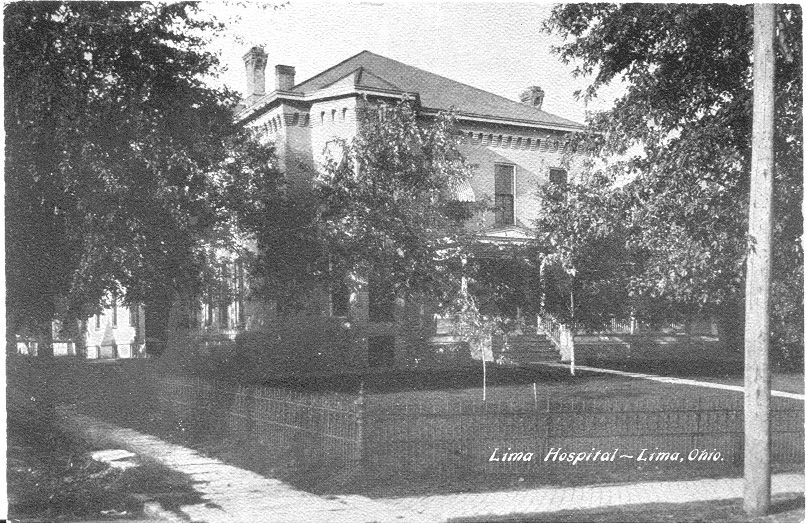

The legacy that the Van Dykes hold in Lima today also includes the massive parties they hosted–several parties had approximately three hundred guests, which is a significant number of people. The author of The 1976 History of Allen County, Ohio, gives us a good look into the lives of the Lima upper crust at this time, “Social life of the well-to-do class in Lima was very formal. Women donned their best floor-sweeping gowns and plumed hats, and drove in their carriages to call on each other and leave their cards.”[20] It was a time where being seen and having pleasant conversations was a big part of life, and parties were a prominent part of that, especially large ones.[21]
We have records of several large events held by Emma at 632 W Market Street. The first was in 1898, before the house’s expansion had yet to occur. Emma held a tea for a staggering four hundred ladies.[22] We do not know if the party was held inside or if the outside of the house was utilized too. However, it seems likely both spaces were utilized based on the size of the tea party. The other logical option would be as an open house event where people came and went during the party. Although, no matter the layout, a tea for four hundred guests is not a short feat.
The Van Dykes also hosted what seems to be a recital in September of 1898. It was a music-filled evening given by the Market St. Presbyterian Church at the home of the Van Dykes. Again, this illustrates their connection to the community, especially Emma’s to her church. A well-known pianist from Toledo, Mr. Fred Trout, was the highlighted musician.[23] Although, most of the performers were from the Allen County area. That night several people played the piano, sang, or did readings. In the paper it was also grouped with another event held for the Ladies’ Aid Society.[24] Hence, it too might have been for charity or fundraising for the church.
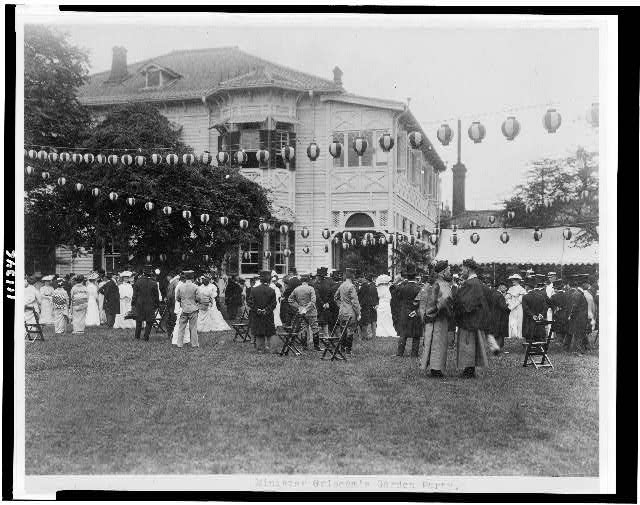

We have a lot more specific information about the next event thanks to a newspaper article. On January 19, 1901, which probably was after the expansion was completed, the Van Dykes hosted a dance and midnight dinner for three hundred guests.[25] The newspaper cites it as one hundred and fifty couples; we do not know if that is an exact number or an approximation.[26] The article talked in depth about how well decorated and interesting the house was and how the Van Dykes were excellent hosts. One of the highlights was that Rocco Satalia, a relatively famous regional harpist, played his harp in the reception room just by the front door.[27] He lived around Montgomery and Greene counties to the south; thus, it must have been a treat to have him in Lima.[28] He specialized in Italian operas and Viennese waltzes, which only added to the general grandeur of the Van Dyke’s event.[29] Upstairs in the ballroom, Frey’s Orchestra played for dancers, apparently into the early morning.[30] Frey’s Orchestra was not as easy to find information about. On May 9, 1907, an augmented grouping of The Frey’s Opera House Orchestra played at the Lima Spring Festival.[31] There was no Frey’s Opera House in Ohio. It seems most likely that Frey’s Opera House Orchestra was from G. Frey’s Opera House, which was located in Hammondsport, New York.[32] At that time, there were a lot of traveling musicians coming to Lima because of its location on the railroad network and because of its increased culture hub, thanks to the influx of oil money. Although, we only see them called Frey’s Orchestra in the article about the Van Dykes’ party, not Frey’s Opera House Orchestra like in the 1907 article. More likely, the Frey’s orchestra at the Van Dyke’s event was led by Professor Frey from Allen County. From another newspaper article, we know that Professor Frey led students in programs at other events.[33] It seems more likely that Professor Frey conducted the orchestra at the Van Dyke’s party compared to a New York based orchestra, but the article does not give enough information to tell us either way. Another unique aspect of the event was that the Van Dykes hosted many people from Toledo for this party.[34] We can assume the Van Dykes had greater connections outside of Lima, and people would travel far for the parties they held. Emma’s obituary summed up how this was her legacy, “Mrs. Van Dyke during her residence in Lima, dispensed hospitality with a royal hand, and her house was a cent[er] for social activity.”[35] Emma was a gracious hostess, who was known for throwing big, exciting parties.


Unfortunately, with the little knowledge we have about Emma, it is uncertain how much she traveled. There are assumptions that she traveled alongside John, but this period of life was not when he traveled often. His life was in Lima, where he set up and ran the Standard Oil Refinery. This was also when he received his patent for the tank car he designed; it is obvious he was busy working and revolutionizing the industry.[36] However, that is not to say they did not travel, but it did become more prevalent for John a decade or so later. We do get hints, however, that they were more well-traveled than the average Lima citizen at the time. The newspaper described their house as “truly oriental with rich hangings and rare curios.”[37] Perhaps many objects were purchased during their travels. We will probably never know for sure.
When talking about the Van Dyke renovation, past Allen County Museum Director Patricia Smith wrote, “the Van Dykes traveled often and enjoyed collecting things on their travels. The additional space, with its built-ins, offered opportunities to display some of these things, which were, no doubt, conversation starters.”[38] Emma and John did add many more spaces in the house that could have showcase trinkets and curiosities. Therefore, even though there are no specific records about the Van Dykes’ travels, at this time, it seems likely that they went on an above-average amount of trips for the time period.
Just as Standard Oil sent John to Lima, they also sent him away. The company transferred him to Point Breeze, Pennsylvania, which is now a neighborhood in Pittsburgh.[39] From newspaper records, it seems as though they started their move in February of 1903 but did not entirely leave Lima until 1904.[40] This means that John lived in Lima for around eighteen years and Emma lived there for about fifteen. They could not sell the 632 W Market Street house because buyers thought the price was too steep.[41] We will talk more about the transfer of the house to its subsequent owners in the July newsletter article. Although the Van Dykes left Lima, though their connection stayed strong to both the people and the city.
It was also in 1904 that Emma started showing signs of a heart condition. According to her obituary, the heart condition became apparent during July of 1904. Still, it did not become serious until September of that year.[42] No treatment was said to have helped her, and so she passed away on November 27, 1904.[43] Even though the illness came on suddenly, Emma’s mother, who lived in Denver at the time, was by her side during her last days.[44] We know that some of their close friends from Lima traveled to her funeral in Pittsburgh.[45] In the end, Emma was laid to rest at West Laurel Hill Cemetery in Bala Cynwyd, Pennsylvania, in an underground mausoleum. Overall, it is very odd that both Emma and Mary died from heart conditions, though this was the early 1900s, and medicine and proper diagnoses were not what they are today. Like Mary, it is unfortunate that Emma passed away so young. All in all, Emma was known by the people of Lima to be a charitable woman and a gracious hostess.
[1] The Allen County Republican-Gazette, “She is Silent,” November 29, 1904, accessed April 15, 2024, https://www.ancestry.com/discoveryui-content/view/847540212:61843.
[2] Find a Grave, “Emma Grimes Van Dyke,” accessed April 15, 2024. https://www.findagrave.com/memorial/218590469/emma-van_dyke.
[3] The Allen County Republican-Gazette, “She is Silent.”
[4] Patricia Smith, “John and Edna,” The Allen County Reporter, Vol. LX, 2005, No. 1, The Allen County Historical Society, Lima, Ohio, 9.
[5] The Allen County Republican-Gazette, “She is Silent.”
[6] Patricia Smith, “John and Edna,” 9.
[7] Emerging America, “United States Pension Bureau,” accessed April 15, 2024, https://www.emergingamerica.org/exhibits/how-civil-war-veterans-transformed-disability/cast-characters/united-states-pension-bureau.
[8] Patricia Smith, “John and Edna,” 9.
[9] Ibid.
[10] Charles F. Wilner, “J. W. Van Dyke: The Story of a Man and an Industry,” A Short History of the Atlantic Refining Company, Philadelphia: Bingham Company, 1936. Accessed April 2, 2024. https://catalog.hathitrust.org/Record/101737420, 4.
[11] Research done, in MacDonell House Research Collection.
[12] “The MacDonell House,” Allen County Reporter, 1994, M-7.
[13] Charles F. Wilner, “J. W. Van Dyke: The Story of a Man and an Industry,” 4.
[14] Patricia Smith, “John and Edna,”10.
[15] The Allen County Republican-Gazette, “She is Silent.”
[16] Robert M. Reese, “Hospitals,” The 1976 History of Allen County, Ohio, John R. Carnes and Beatrice Boose Hughes eds., Unigraphic Inc. Evansville, Indiana, 1976, 487.
[17] Ibid.
[18] Ibid.
[19] The Allen County Republican-Gazette, “She is Silent.”
[20] Frank G. Love, “Social Life and Customs,” The 1976 History of Allen County, Ohio, John R. Carnes and Beatrice Boose Hughes eds., Unigraphic Inc. Evansville, Indiana, 1976, 592.
[21] Ibid.
[22] Marian Fletcher Lecture Held May 1986, in MacDonell House Research Collection.
[23] Lee Brentlinger, Research on Music in Allen County, 1979, in Allen County Museum Archives.
[24] Ibid.
[25] Frank G. Love, “Social Life and Customs,” 592.
[26] Times Democrat, “Many Were the Welcomed Guests at the Home of Mr. and Mrs. Van Dyke Last Night.” January 19, 1901.
[27] Ibid.
[28] Elise Kelly, “The Golden Harp Player of Greene County,” Green County Ohio Blog, August 7, 2019, accessed February 13, 2024, https://www.greenecountyohio.gov/Blog.aspx?IID=226.
[29] Ibid.
[30] Times Democrat, “Many Were the Welcomed Guests at the Home of Mr. and Mrs. Van Dyke Last Night,” January 19, 1901.
[31] Lee Brentlinger, Research on Music in Allen County, 1979, in Allen County Museum Archives.
[32] Kirk House, “1901: A Hammondsport Odyssey,” accessed April 23, 2024, https://www.crookedlakereview.com/articles/101_135/127spring2003/127house.html.
[33] Lee Brentlinger, Research on Music in Allen County, 1979, in Allen County Museum Archives.
[34] Times Democrat, “Many Were the Welcomed Guests at the Home of Mr. and Mrs. Van Dyke Last Night,”
[35] The Allen County Republican-Gazette, “She is Silent.”
[36] Charles F. Wilner, “J. W. Van Dyke: The Story of a Man and an Industry,” 5.
[37] Times Democrat, “Many Were the Welcomed Guests at the Home of Mr. and Mrs. Van Dyke Last Night.”
[38] Patricia Smith, A Detailed Resource Guide, 2012, 109.
[39] Charles F. Wilner, “J. W. Van Dyke: The Story of a Man and an Industry,” 6.
[40] Lima Republican Gazette, MacDonell House Research Material.
[41] Article from Unknown Newspaper dated 1915, in MacDonell House Research Material.
[42] The Allen County Republican-Gazette, “She is Silent.”
[43] Find a Grave, “Emma Grimes Van Dyke.”
[44] The Allen County Republican-Gazette, “She is Silent.”
[45] Ibid.
Johnston, Frances Benjamin, “Women Office Workers in [the] Internal Revenue Service,” 1888, Library of Congress, Accessed April 17, 2024, https://www.loc.gov/pictures/item/86707438/.
Unknown Photographer, “[J.G. Feight’s Birthday Dinner],” 1901, Library of Congress, Accessed April 17, 2024, https://www.loc.gov/pictures/item/2001696690/.
Unknown Photographer, “Minister Griscom’s Garden Party,” c. 1905, Library of Congress, Accessed April 17, 2024, https://www.loc.gov/pictures/item/94507486/.
Unknown Photographer, “Dr. Diamond Dick Orchestra 1886,” 1886, Library of Congress, Accessed May 2, 2024, https://www.loc.gov/pictures/item/92512470/.
Prof. Satalia Business Card, Greene County Records Center and Archives.
All other images are from the Allen County Museum Archives.


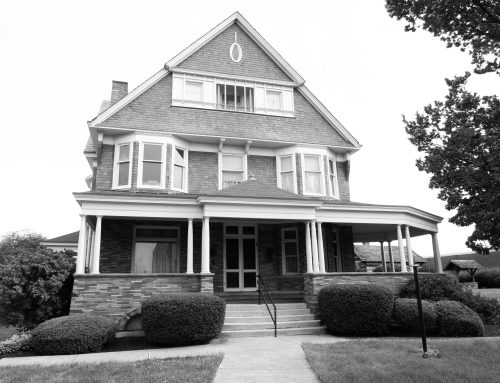
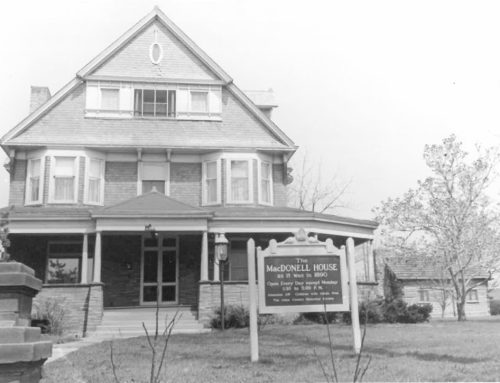
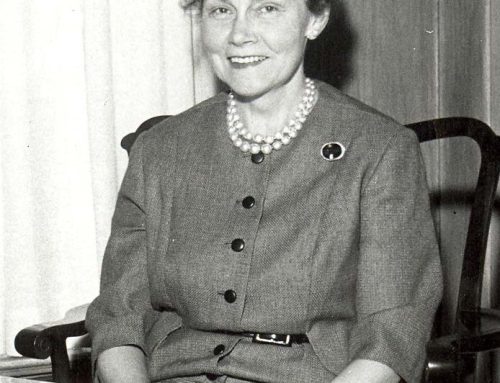
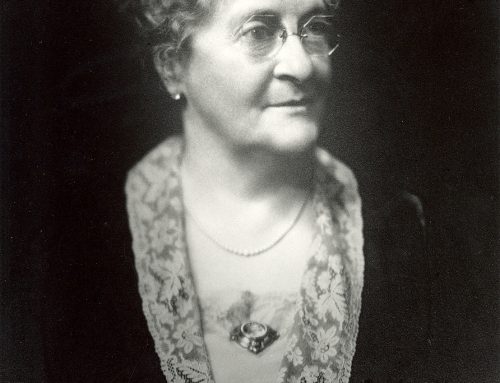












Leave A Comment